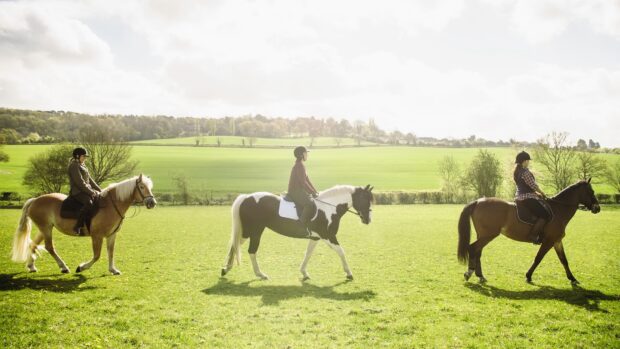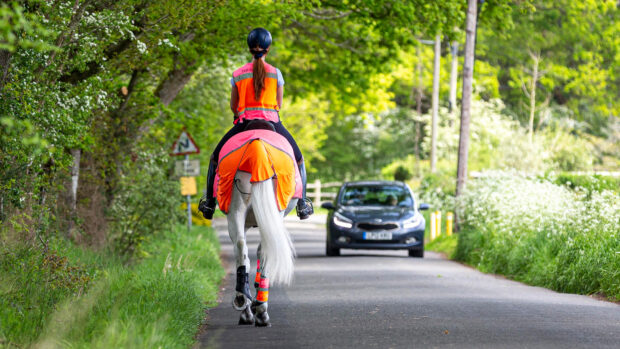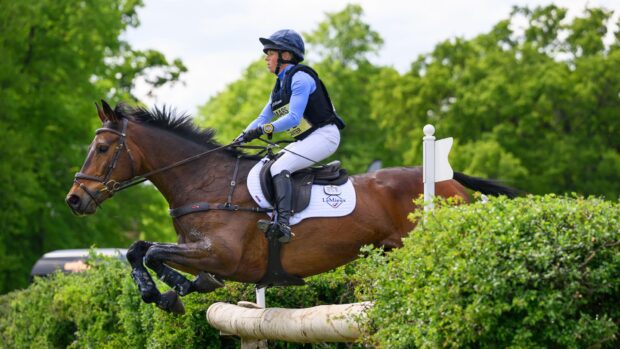It isn’t fun riding a horse with a tendency to nap. Suddenly stopping, refusing to go forward or trying to whip round can be frightening and, sometimes, dangerous. Here are seven tips for stopping this nuisance behaviour in its tracks
1. Is he napping or spooking?
These are easily confused but it’s important to know the difference. Spooking is when your horse is genuinely scared of something — perhaps a noise, object or sudden movement.
Napping is when your horse is reluctant or refuses to move in the direction you want to go. It can manifest itself in several ways, including spinning around, rearing, bucking and feeling as though he is leaning or hanging towards home.
Ears are the giveaway. A spooking horse will usually have his pointing forward, looking at the thing that has scared them. If napping, their ears tend to be backwards.
2. Identify the issue
Napping often stems from a fundamental problem such as lack of trust, leadership, respect and/or confidence between horse and rider.
However, before you put it down to bad behaviour rule out any potential medical causes — such as back pain and poor teeth — and make sure your horse’s tack is a good fit.
3. Consider your routines and habits
If you’re one of the many riders juggling horses with work, children and a generally busy lifestyle, you may be creating bad habits without being aware of them.
For example, do you tend to finish your schooling sessions near the gate? It’s only natural if you’re tight on time, but your horse will soon learn that the gate means work is over and start drifting towards it. Alternatively he may speed up when you turn that way and drop behind your leg when you turn away.
When hacking, don’t always go in the same direction and don’t gallop from one field gateway to another. If you don’t have circular routes vary where you turn around so that your horse doesn’t associate one particular area with going home.
4. Evaluate your relationship on the ground
How is your horse to handle when you aren’t riding them? Think about how he behaves on the ground — good manners, such as moving away as you enter his stable and being quiet to lead, are important. If the horse tends to take charge and pushes their handler around, this lack of trust and understanding can show up as problems under saddle too.
5. Recognise the warning signs
Eliminate any signs of napping before they have a chance to escalate. Shane Borland, a British reining team member who specialises in tricky horses, advises keeping the horses legs moving if they start to nap — even if it’s sideways.
“If you feel your horse begin to nap, keep his feet moving and his neck bent,” advises Shane. “By asking the horse to go left and right continually he will learn that it’s easier to go forward.
“Being able to manoeuvre his hindquarters also means you will be able to realign him should he try to turn for home.”
6. Make sure the basics are in place
When you put your leg on, your horse must respond — regardless of whether you are schooling or hacking. Don’t fall into the trap of nagging with your legs or letting him pause before responding, and make sure you are consistent in your expectations — you horse won’t learn to be responsive if you only expect him to be react instantly in the school, and then let him get away with a slow response while hacking.
7. Don’t give up
If you’re certain the horse is napping rather than spooking, you may be tempted to take him home and spend more time in the arena because your confidence has been knocked. But the more time your horse spends in the arena, the worse the napping is likely to get. Ask another rider for help, or find someone to accompany your horse on a hack on foot to help you get past the troublesome spot.
Liked this? You may also enjoy reading these articles…
Trainers are not always known for their tact or diplomacy. ‘Tell it like it is’ is the order of the

Why horses nap and refuse to go forward – and how to re-train them

10 training tips that top riders swear by

‘Who’s in charge here?’ — and other things you might be used to hearing from your trainer

Subscribe to Horse & Hound magazine today – and enjoy unlimited website access all year round
Horse & Hound magazine, out every Thursday, is packed with all the latest news and reports, as well as interviews, specials, nostalgia, vet and training advice. Find how you can enjoy the magazine delivered to your door every week, plus options to upgrade your subscription to access our online service that brings you breaking news and reports as well as other benefits.




